LIMAÇON TRISECTRIX
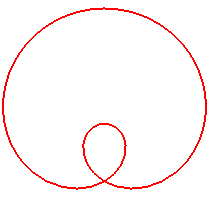
| next curve | previous curve | 2D curves | 3D curves | surfaces | fractals | polyhedra |
LIMAÇON TRISECTRIX

| Curve studied by Archimedes, and Etienne Pascal in 1630.
Other name: sesquisectrix (Aubry). |
| Polar equation: Complex parametrization: Polar equation in the frame (A(a,0), Area: |
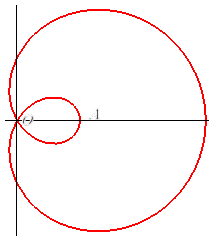 |
| The limaçon trisectrix is the locus of the intersection points between two lines, both turning uniformly around a point, the speed of one of which being 1.5 times the other's (hence the name of sesquisectrix); therefore, it is a special case of Maclaurin sectrix. |
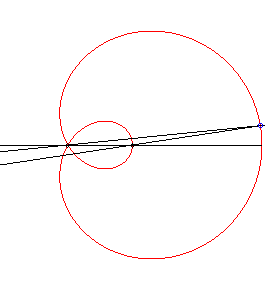 |
|
The angle The inverses of the limaçon trisectrix with respect to the two poles A and B , namely the hyperbola with eccentricity 2 and the Mac-Laurin trisectrix, are therefore two other trisectrix curves. |
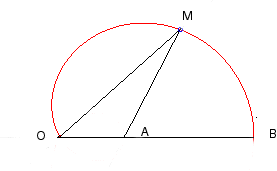 |
As indicated by its name, the limaçon trisectrix
is a limaçon of Pascal: it is the conchoid
of the circle with respect to its centre, with a modulus equal to half
the radius of the circle, and therefore also the polar
median of two circles, as well as the pedal
of a circle, and an epitrochoid:
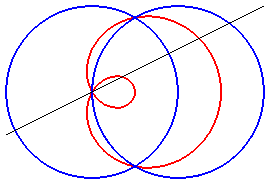 |
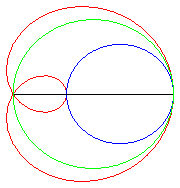 |
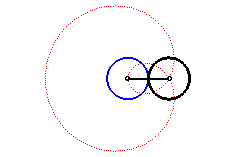 |
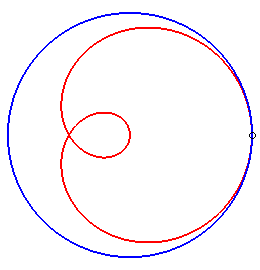 |
| Trisectrix limaçon as the polar median of two circles (hence also a cissoid) | Trisectrix limaçon as the pedal of a circle. | Trisectrix limaçon as an epitrochoid. | The complex parametrization shows that the trisectrix limaçon is the locus of the middle of two points describing a circle, one of which going twice as fast as the other. |
The limaçon trisectrix is also the pedal of the cardioid with respect to the centre of its conchoidal circle.
Finally, the third equation above shows that it is a rose.
| next curve | previous curve | 2D curves | 3D curves | surfaces | fractals | polyhedra |
© Robert FERRÉOL 2017